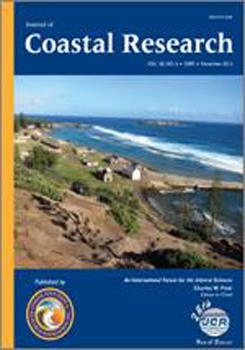Encyclopedia of Modern Coral Reefs. Structure, form and process. David Hopley, Editor. Springer, the Netherlands. ISBN. 978-90-481-2638-5. $549.
It is the privilege of being the book review editor to choose which volumes to send out for review and which to keep for one's own self. For this splendid volume, the decision was easy. Having often made use of the Encyclopedia of Coastal Science, a sister volume in this Encyclopedia of Earth Science Series, series, I sat down to read this magnificent and hefty volume (1266 pages and 3.5 kg) with high expectations. The book's stated aim is to provide a source for reef specialists and coastal geomorphologists in general. My review is thus from the latter perspective. This is not an afternoon's reading material, but an essential reference book to have at hand. It contains almost everything one would like to know about the geology, form, and processes of modern (Holocene) coral reefs. There are also somewhat unexpected (given the title) chapters on Carboniferous and Devonian reefs. As a ready reference for coral reef geology and geomorphology, I expect this will be invaluable. The library of every university that teaches coral reef geomorphology should have a copy.
The work is dominated by tropical coral reefs, but it does have a section on cold water corals as well. In terms of its geographical coverage, the volume is global but with particularly strong focus on the South Pacific, Great Barrier Reef, and Caribbean, where most of the work has been done. The Indian Ocean is less well represented, and coverage of the mainland East African reefs is conspicuously absent.
As a nonreef coastal geomorphologist, I learned a great deal from this volume. Not only is it an ideal reference for coral reef and tropical shoreline researchers in general, but many of its entries have more global application. This is particularly true of the sea level change and sedimentology entries. Each of the entries is very well cross-referenced to other related subjects. In any such work there is a degree of repetition between various entries, but this has been minimised to a large extent in this volume, which is to the credit of the editor.
More than 150 contributors have written the 260 entries in this volume. A great many of the contributors are at the forefront of their field, which means that this is a synthesis of the current state of the art. The individual contributions range from quite unhelpful one sentence entries (on carbonate rock classification) that could readily have been combined, to substantial contributions of more than 10,000 words. The reference section for each entry includes up-to-date sources as well as important older works. There are also some rather odd entries such as, “General evolution of coral reefs,” which seems rather like filing something under “t” for “the.” An interesting component of the book is the inclusion of biographical sections on prominent coral reef scientists of the past and present including of course, Charles Darwin. It is always a tricky job deciding who is prominent enough (or old enough) among extant reef scientists to warrant an entry.
The book is illustrated throughout with high quality colour plates that really do justice to the subject. I thoroughly recommend it to all coastal geomorphologists, not just those fortunate enough to work on these magnificent biogenic features. At $549 for over 1200 pages with copious colour illustrations it is very good value. I am sure it will serve as an essential manual for decades to come.





